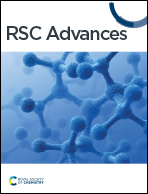Recycling of NdFeB magnets employing oxidation, selective leaching, and iron precipitation in an autoclave
Abstract
The increasing production of neodymium–iron–boron (NdFeB) magnets for technological applications results in disposal problems. NdFeB magnets contain a significant quantity of rare earth elements (REEs). China is the largest REEs producer, but it applies quotas and increases the export prices of REEs. To address this issue, this study aims at investigating the recovery process of REEs from scrap NdFeB magnets. After oxidation of NdFeB magnet powders, selective leaching with nitric acid was carried out to achieve high-purity REE-rich leaching liquor. First, the oxidation kinetics of NdFeB powders was studied in detail to determine the oxidation temperature and duration. Afterwards, the effects of selective leaching parameters, including acid concentration, leaching temperature, stirring speed and solid/liquid ratio, were examined by analysis of variance (ANOVA) analysis based on Taguchi method. The most substantial parameters were assigned to be the temperature and solid/liquid ratio. Eventually, the dissolution kinetics were studied to propose a model for REEs. Several universal equations for dissolution kinetics were tested, and (1 − (1 − x) = k × tn) gives the best results for REEs. The findings show that the leaching process follows the shrinking core model. Activation energy was calculated to be 40.375 kJ mol−1 for REEs. As the last step, the iron dissolved during leaching was precipitated as hematite in the autoclave. The hematite precipitation experiments were performed based on the Box–Behnken design. The effect of precipitation parameters was investigated by ANOVA analysis, and the precipitation process was optimized using response surface methodology (RSM), which resulted in the minimum iron and maximum REEs content in the leach liquor.

- This article is part of the themed collection: Metal extraction and recycling


 Please wait while we load your content...
Please wait while we load your content...